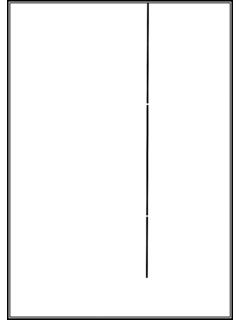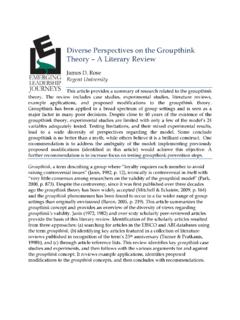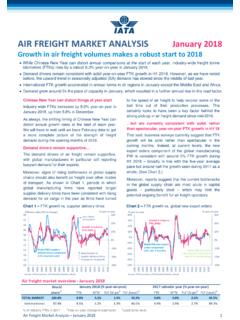Transcription of HOW TO CODE THE RORSCHACH Theoretical …
1 HOW TO code THE RORSCHACH 37. in order to accurately score the responses. As a complement, we have created Three a RORSCHACH Scoring worksheet (see Appendix 4) that helps with speed and accuracy in coding, which the first-time examiner may find useful. HOW TO code THE RORSCHACH Theoretical Goals Underlying the Coding Process Understanding the theory behind the RORSCHACH is helpful to the coding Tara Rose process. An experienced examiner makes final decisions based on the theoret- ical framework of the test and the coding process. Read chapter 2 from Exner's Comprehensive System (vol. 1, 1993) for a more complete understanding C. oding RORSCHACH responses is an involved process. It requires taking all of the text transcribed during the test administration (qualitative mate- of the RORSCHACH .)
2 Essentially, this broad-reaching test is composed of a stim- rial) and turning it into numeric scores (quantitative information) that ulus that allows the examinee's traits and styles to be expressed. When inter- will later be used in the structural summary, and ultimately, for interpretation. preting the data, the examiner cannot focus solely on one small aspect of the There are two parts to the coding process. The first involves coding each examinee or one small coded variable; each aspect can be understood only in response and the second involves entering the codes (or scores) for each re- the context of the examinee's other features. A whole picture of the examinee sponse onto a page that organizes all the coded information category by cat- must be developed, a task that can challenge a new or inexperienced examiner.
3 Egory, called the Sequence of Scores sheet. ( The codes can also be entered The overarching goal of coding is to try to understand how the charac- into a computer program such as RIAP or ROR-SCAN that can generate the teristics of a person merge together in a series of complex interrelationships Sequence of Scores sheet.) We will walk you through each task, step-by-step. that breeds a reasonable understanding of that person through the protocol Once the examiner has completed the two steps outlined in this chapter, ( Exner, 1993, p. 85). Futhermore, the cardinal rule in coding RORSCHACH re- he or she will then tally the coded information and compute the summary sponses is that the code or score should represent the cognitive operation scores and indices for the Structural Summary. Creating the Structural Sum- at the time the subject gave the answer (p.)
4 85). Don't code the response that mary is discussed in detail in the next chapter. first appears during the Inquiry Phase; to code accurately, you must include data from both the Response and Inquiry. However, The coder-interpreter must resist the temptation to consider the original response and the infor- THE CODING PROCESS mation developed in the Inquiry as being continuous, for this is an illogical assumption. Many events transpire between the original response and the Coding responses is probably the most difficult task for the new examiner. Inquiry and .. the latter occurs under a much different structure than the Learning to accurately code the RORSCHACH takes time and requires guidance former ( Exner, 1993, p. 87 ). In other words, the examinee's experience from an experienced examiner or Rorschacher.
5 We strongly recommend that may differ between Response and Inquiry Phase. The examiner must note any examiner who plans to use the RORSCHACH take a class and/or be super- the difference. vised by someone with experience in administering the RORSCHACH . The second most important rule in the coding process is that all of the Before discussing the actual coding system, two important aspects of the components that appear in the response should appear in the coding ( Exner, RORSCHACH coding process need to be emphasized. First, the examiner must 1993, p. 87 ). In other words, don't leave anything out that should have been understand the Theoretical goal behind RORSCHACH coding. Second, the exam- coded. Errors of omission are often much more important than coding dis- iner must rely on the coding rules in Exner's Comprehensive System (vol.)
6 1, 1993) agreements because they can lead to a distorted picture of the examinee's 36. 38 ESSENTIALS OF RORSCHACH ASSESSMENT HOW TO code THE RORSCHACH 39. psychological characteristics. Rapid use Exner's preferred continuous approach to coding. A continuous approach Rapid Reference Reference summarizes the Ror- coding strategy involves taking a single response and going through each of the schach ( Exner, 1993) coding rules. coding categories for that response before starting the scoring process for the Coding Rules next response. Scoring in this manner allows the examiner to think in terms of Overarching goal of the coding the integrated score and helps to avoid errors of addition and omission. process: to understand how the What Needs to Be Coded? characteristics of a person merge The RORSCHACH Scoring worksheet helps the examiner thoroughly cover all together in a series of complex Every one of the examinee's re- coding categories for each response by providing a separate worksheet for interrelationships that breeds a sponses to the inkblots must be each response (see Rapid Reference ).
7 The worksheet includes the seven reasonable understanding of that person (Exner, 1993, p. 85). coded under multiple categories. coding categories, special directions, references to the coding rules in Volume Cardinal rule of coding: The In order to accurately code each re- 1 of Exner's Comprehensive System book and his Workbook (1993, 1995), code or score should represent sponse, an examiner relies on a options for coding each category, and a space for coding justification. the cognitive operation at the codebook that lists the rules on Rapid Reference describes how to use the Scoring worksheet in Appen- time the subject gave the how to categorize qualitative infor- dix 4. The worksheet adds an extra step to Exner's Structural Summary, so it may answer (Exner, 1993, p. 85). mation (in this case the examinee's appear to add time to the process.)
8 But in fact, it is a time saver because the ex- Second rule of coding: All of the components that appear responses to the inkblot). The code - aminer is less likely to be hesitant and more likely to code a response correctly in the response should appear book allows any trained examiner and therefore feel more confident filling out the Sequence of Scores sheet. The in the coding (Exner, 1993, to code responses reliably. worksheet is most useful for the first few administrations, when the new user is p. 87). Avoid errors of omission. That codebook for the Ror- most unfamiliar with the complex coding process. Examiners may attempt to schach inkblot test can be found in expedite coding by omitting the basis for a coding decision. However, including Chapters 4 through 9 of Exner's the information will make it much Comprehensive System (vol.
9 1, 1993). Exner's Workbook (1995), while more ac- easier to explain the reasoning in cessible, simply does not cover all the information needed to accurately code class or supervision. Rapid Reference the responses. This Essentials guide also does not cover all the rules of the Highlights of coding system (see Caution ) and is not meant to replace Volume 1 or the the RORSCHACH Scoring STEP-BY-STEP CODING. Workbook. Instead, it should be viewed as a companion to Volume 1, pro- Worksheet viding an overview of the coding system. As a guide it also provides lists of While it is true that the RORSCHACH is There are separate sections general rules and scoring descriptions. a sophisticated and complex coding for coding each of the seven system, the examiner should also categories. know that in many ways it is very Sections parallel the Structural Our RORSCHACH Scoring Summary sheet.
10 C A U T I O N Worksheet: Accuracy, Speed, clear-cut and manageable. There are seven steps for coding each re- Special directions for coding are The Examiner's Primary Confidence given in ( ) s. sponse since there are seven cate- Source for Coding Scoring options within a category Our RORSCHACH Scoring worksheet, gories to code : (1) Location and are given in { } s. To code completely and accurately, located in Appendix 4, will help Developmental Quality, (2) Deter- rely on the The RORSCHACH : A Reference pages to Exner's Comprehensive System, (vol. 1, first-time examiners code as accu- minants, (3) Form Quality, (4) Con- volume 1 book and workbook Exner, 1993). rately, completely, and quickly as tents, (5) Popular Responses, (6 ) are given in [ ] s. possible. It also allows examiners to Organizational Activity ( Z score ), 40 ESSENTIALS OF RORSCHACH ASSESSMENT HOW TO code THE RORSCHACH 41.




